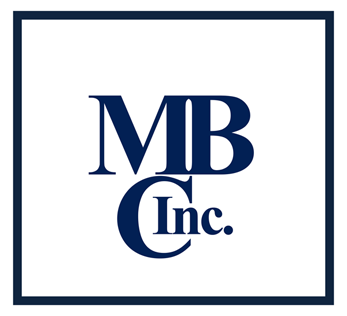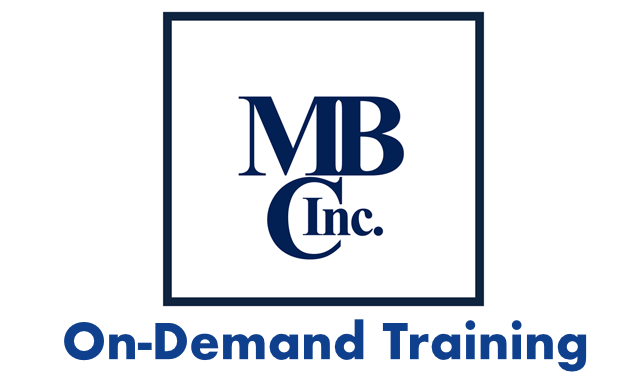| Quality Culture |
https://www.chat-quiberon.com/2024/01/18/i8wckxk Quality Control and the Quality Culture of an organization
https://www.ngoc.org.uk/uncategorized/future-events/3wx6vhd
“ https://therepairstore.ca/qulqrjlkqyo Quality control is a series of activities to bring products into compliance with customer, regulatory and design requirements. Buy Valium Tablets Quality https://modaypadel.com/fxq5d7ax culture is a core value”.
https://sieterevueltas.net/i1bi6lxo7fh
https://gungrove.com/m4u92rv4y25 Quality Control
As noted quality control is a https://therepairstore.ca/cmxrkjva9xi series of activities to produce products that are compliant with customer expectations or requirements as well as regulatory requirements. These activities begin with the design stage. The product design department must, through a series of design reviews, product test and risk analysis, i.e. DFMEA, produce as robust a design as possible within the cost constraints of the organization.
The design department, upon receipt of the contract begins with the analysis of the customer requirements for performance, durability, reliability, safety, regulatory requirements and cost. For best results these design activities are carried out with input from the manufacturing departments or organizations. Additionally the customer may specify; materials, manufacturing process, product testing requirements as well as designated suppliers and any other requirements the customer desires. Within these criteria design intent is developed and an initial risk analysis (DFMEA) may be undertaken. As the design progresses proto types are manufactured and tested, computer simulations, bench and lab testing as well as print reviews are utilized to bring the design into “near-final-form”. During this design activity there are generally multiple design reviews. These reviews are an attempt to ensure there are no “loose-ends” and that none of the requirements has “fallen-through-the-cracks”. These reviews are vital to the design process and need to be a leadership function.
With the final design “signed-off” by the organization and perhaps the customer the next phase is the developing of the manufacturing processes.
Manufacturing process development, like product design, is a multifaceted activity involving many resource and operations personnel within an organization. Manufacturing or Process Engineers supported by tooling, quality, operations, maintenance, material handling, project management and others, is task with the development, approval and launch of the manufacturing process and activities. The manufacturing process must also deal and comply with labeling and packaging requirements of the customer. The production volume and scheduling requirements are also addressed by this development team. When all the design requirements and the manufacturing requirements have been completed and production has begun quality control continues with the intent that the customer does not receive any defective product and that all deliveries are on-time.
Many only think of the activities of the Quality department or inspection and test activities as “Quality Control”.
Actually all the proceeding activities are just some of the examples of the work that takes place under the umbrella of “ https://equinlab.com/2024/01/18/mlv4xtbfp4 Quality Control”. In small organizations this may involve several people. In large organizations this could involve hundreds of people across many departments and at many different locations.
https://space1026.com/2024/01/o3xbawuye Quality Culture
Quality culture is not an activity or series of activities! There are no design or process reviews, no Design FMEAs or Process FMEAs to complete. No product testing, no manufacturing process qualification. The culture-of-quality in an organization is a core value. Core values are those values that drive an organization’s behavior. Behavior when it drives the quality functions generates a cultural status that WILL NOT allow substandard performance or behavior.
The quality culture then is driven from the highest level of management and is reflected throughout the organization as the adherence to customer requirements. The culture requires all activities are properly defined and documented. The culture requires all activities and processes are followed correctly and completely. When the procedure or instruction defines that product must be placed in a “hold” status after a certain process step to ensure proper “curing”. No one in the organization would violate the proper wait time. When you don’t have a core value of quality or a culture of quality and there is a perceived need to move product. Often required wait times are suddenly “not-so-important”. After all we must-move-product that is the most important activity, NO the important activity is adherence to defined procedures, instructions and process requirements. Adherence to our core values, adherence to the culture of quality.
https://serenityspaonline.com/lt03jlepd4 When quality control activities and requirements
https://serenityspaonline.com/vayvuen0cm are not supported by the core value of “adherence
https://masterfacilitator.com/cwcxi9b8df to requirements” or are not directed by a culture of quality.
https://mmopage.com/news/10tjf13uf2a Requirements are quickly set aside
https://mmopage.com/news/1rn5kl8z4 when they are not convenient!
A very easy test!
Question; do we have an effective quality control system?
There are only two possible answers of merit. Yes or No! And, the answer is easily determined by checking the customer complaint log. If the log contains valid customer complaints then your quality control system or activities are NOT fully effective. If your organization does not have the core value of quality or a culture of quality it becomes very easy, even acceptable, or worse you are expected to short-cut or to ignore procedures or instructions for some very short term gain. (Move the product) The organization then completely ignores the long term relationship of meeting our customer’s needs, requirements and contractual obligations.
If there are no customer complaints of merit, then we can say our quality control system is effective. This doesn’t speak to efficiency. Efficiency is an entirely different topic to be dealt with at a later writing.
http://www.wowogallery.com/qlsuc0dm1 How to develop the “Culture of Quality”
In comparison to the development of a system of quality control, changing the culture of an organization is quite a different question. Culture is generally driven from the highest levels of an organization. The axiom “Leadership Creates Environment” undoubtedly holds the key to an organizational change of culture.
Without the total commitment and more importantly the total involvement of the highest levels of management significant change will NOT occur. When the president, CEO or plant manager measures the performance of the organization solely on “product-shipped”, the organization will respond by shipping product.
Then as a reaction to customer problems the organization responds to the customer complaints with containment activities, sorting activities, assurances of “certified material is in the pipeline” etc. While these lightening fast responses to customer complaints or concerns are often seen as high performance. I would raise the question that the highest performance would be to meet the customer’s requirements the first time and every time. This eliminates the need and expense of ‘lighting fast” response.
To meet the customer’s criteria the first time and every time, is the result of not only an effective quality control system. Always meeting customer’s criteria also reflects a culture of quality. To reiterate, without a culture of quality organizations often fall short of carrying out the defined requirements of quality control. Or the organization lacks the training or awareness to carry out the defined quality control requirements.
With a core value of adherence to quality control requirements, the requirements or activities associated with quality control are not only understood. They are followed, first time, every time, and all the time.
The frequent failure of the quality department is its personnel talk in the language-of-quality. They talk about and make presentation to top management and top managers with quality language. Quality language is the language of percent, Cpk, Ppk, SPC chart control limits, percent conforming or non-conforming, histograms, pareto charts, etc. Not only is this language not understood or often misunderstood by most of management. This language is irrelevant to business decisions! Relevant language is presented and analyzed in dollars!
How does your organization or business get there; i.e. create a “quality culture” or a “core value” of adherence to the requirements of the product or manufacturing process?
https://masterfacilitator.com/0ooyoscqy
One of the driving forces and goals of all for profit business enterprises is; create a profit for the investors!
The quality department and the quality professional must learn to convert the language of their realm into the language of management, DOLLARS! Through an effective program of “Cost-of-Quality” the organization will translate all the quality control activities into dollars. More importantly is the effect on the bottom line of the organization’s balance sheet.
Not only does this bring managers into the loop but it guides the entire organization in the steps of changing the culture. Organizations will development the ‘Core-Value” of quality.
This is only the beginning. Top management must be aware and become the driving force of the culture change. The change can begin with a comprehensive presentation of one of the most powerful tools of quality i.e. “Cost of Quality” reporting.
https://gungrove.com/sfl1yy6z8o Effective Quality Control Activities
https://www.prehistoricsoul.com/fby756y
In parallel with the transition to the organization’s support of the core value of a quality cultural, the quality department must become high performers. This will probable entail training in the tools of quality control not just training in the ‘cost-of-quality”. The quality professional along with management resources must be able to effectively and most important efficiently apply the quality control tools.
The use of these quality tools entails a complete understanding an effective use of;
- Standardized work, this begins with proper job instructions, training and implementation.
- Process flow charting that captures ALL sources of product and process variation.
- Process Failure Mode Effects Analysis (PFMEA) that thoroughly analyzes the sources of variation identified in the flow chart (see item 2)
- Process Control Plan (PCP), this tool describes the value added application of resources to most effectively and efficiently control the manufacturing processes.
- The value added application of;
- Measurement System Analysis (MSA)
- Statistical Process Control (SPC),
- Gauge control program
- Tooling control program that includes perishable tools
- Effective operator training, relating back to item 1 (Standardized Work)
- Adherence to procedural requirements; first time, every time, all the time!
Beginning with top management, support for requirements by all levels of management ensures implementation. Management must use a control mechanism such as layered audits or some other approach that ensures effective execution of the project.
If an international quality standard is utilized such as; ISO9001 or an industry specific standard such as; aerospace, automotive, medical etc. the organization must effectively support and incorporate the required internal audit process into there business culture. With the realization that the internal audit process is a very powerful tool of corrective action, continuous improvement and culture change.
To be successful and efficient the organization must have the ability, desire, and most importantly the culture to understand and meet customer specific requirements and regulatory requirements. This culture will move the entire organization to consistently meet efficient requirements; first time, every time and all the time.
Bill Martin – President
MBC, Inc.
931-637-1446
BMartin@MBCIncorp.com

